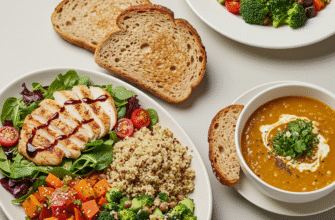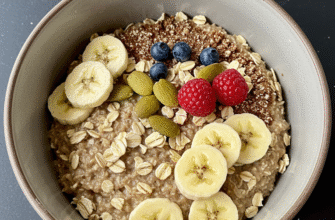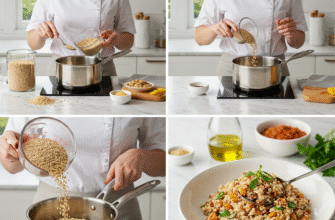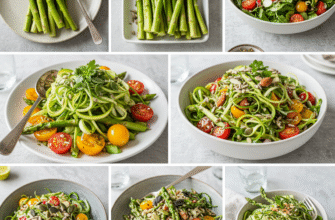Let’s talk about turnips. Often overlooked, sometimes even unfairly maligned, this humble root vegetable packs a surprising punch in both flavor and versatility. If your only experience with turnips involves boiled-to-mush blandness, it’s time for a reintroduction! Prepared correctly, turnips offer a delightful peppery-sweet taste and a satisfying texture that can elevate many meals. Forget the sad, watery versions of the past; we’re diving into genuinely tasty and wholesome ways to make turnips a welcome addition to your kitchen repertoire.
These root vegetables belong to the Brassica family, sharing lineage with kale, broccoli, and radishes. This family connection hints at their potential – a subtle earthiness combined with a characteristic sharp bite when raw, which mellows considerably when cooked. They grow relatively quickly and are often available year-round, making them a reliable and budget-friendly option.
Why Give Turnips a Chance?
Beyond just being edible, turnips bring some great qualities to the table. They are relatively low in calories and carbohydrates compared to potatoes, making them an interesting swap for those watching their intake. They also contribute fiber to your diet, which is always a plus for digestive wellness. Think of them not just as filler, but as a vegetable contributing its own unique profile and goodness to your plate. They absorb flavors wonderfully, making them a fantastic team player in various dishes.
Turnips are recognized as a source of various nutrients. They contain fiber, which aids digestion. They also provide Vitamin C and other micronutrients, contributing to a balanced diet without adding significant calories.
Selecting Superb Specimens and Storing Them Smartly
Your turnip culinary adventure starts at the store or market. Look for turnips that feel firm and heavy for their size, without any soft spots, cracks, or bruises. Smaller to medium-sized turnips (around 2-3 inches in diameter) tend to be younger, sweeter, and more tender than their larger, older counterparts, which can sometimes become woody or overly pungent.
If the leafy greens are still attached, they should look fresh and vibrant, not wilted or yellow. These greens are edible too, often prepared like mustard or collard greens! Once home, separate the greens from the roots immediately if you haven’t already, as the leaves draw moisture from the bulb. Store the greens separately in a plastic bag with a paper towel in the crisper drawer and use them within a few days. The turnip roots themselves can be stored loosely in the crisper drawer of your refrigerator, where they should keep well for a couple of weeks.
Getting Started: Basic Prep
Preparing turnips is straightforward. First, give them a good scrub under cold running water to remove any dirt. Trim off the top stem area and the bottom root tip. While very young, small turnips might have skin tender enough to eat, most turnips benefit from peeling. Use a vegetable peeler to remove the outer skin, which can sometimes be slightly bitter or tough. Once peeled, you can chop, dice, slice, or shred the turnip depending on your chosen cooking method. Uniform pieces ensure even cooking, so try to be relatively consistent with your cuts.
Delicious Destinations: Tasty Turnip Techniques
Roasting: The Sweet Spot
Roasting is perhaps the best way to convert turnip skeptics. The dry heat caramelizes the natural sugars in the turnip, mellowing out any bitterness and bringing forward a lovely sweetness. It couldn’t be simpler:
- Preheat your oven to around 400°F (200°C).
- Peel and chop your turnips into roughly uniform cubes (about 1-inch).
- Toss the cubes generously with olive oil, salt, and freshly ground black pepper.
- Feel free to add other seasonings! Dried herbs like thyme or rosemary work beautifully. A pinch of garlic powder or smoked paprika adds depth.
- Spread the turnips in a single layer on a baking sheet. Don’t overcrowd the pan, or they’ll steam instead of roast. Use two sheets if necessary.
- Roast for 25-40 minutes, flipping halfway through, until they are tender when pierced with a fork and nicely browned and caramelized around the edges.
Roasted turnips are fantastic on their own as a side dish, tossed into salads, or added to grain bowls. Try roasting them alongside other root vegetables like carrots, parsnips, and sweet potatoes for a colorful medley.
Mashing: A Comforting Classic, Reimagined
Move over, potatoes (or at least, make some room!). Mashed turnips offer a lighter, subtly peppery alternative to traditional mashed potatoes. They can be mashed on their own or combined with potatoes, cauliflower, or parsnips for different flavor profiles.
- Peel and chop turnips into even chunks.
- Boil them in salted water until very tender, usually about 15-25 minutes depending on the size of the chunks. Drain thoroughly – excess water leads to sad, watery mash.
- Return the cooked turnips to the pot over low heat for a minute to evaporate any remaining moisture.
- Mash them using a potato masher or ricer. Avoid using a food processor, which can make them gummy.
- Stir in your desired additions. Butter and a splash of cream or milk are classic. For tang, try Greek yogurt or sour cream. Season well with salt, pepper, and maybe some nutmeg, garlic powder, or fresh chives.
Serve mashed turnips anywhere you’d serve mashed potatoes – alongside roasted meats, stews, or sausages.
Sautéing or Stir-Frying: Quick and Flavorful
For a quicker cooking method, sautéing or stir-frying works wonders. Cutting the turnips smaller ensures they cook through relatively fast.
- Peel and dice the turnips into small cubes (around 1/2-inch) or cut them into thin matchsticks.
- Heat a bit of oil (like olive oil or sesame oil) in a skillet or wok over medium-high heat.
- Add the turnips and sauté, stirring frequently, until they become tender-crisp and lightly browned, typically 8-12 minutes.
- Season simply with salt and pepper, or get creative. Add minced garlic, ginger, or thinly sliced onions partway through cooking. Toss with fresh herbs like parsley or cilantro at the end.
- Consider adding other quick-cooking vegetables like bell peppers, snow peas, or bok choy for a complete stir-fry. A splash of soy sauce or tamari towards the end adds umami depth.
Sautéed turnips are great as a simple side or incorporated into larger stir-fry dishes with protein and rice or noodles.
Soups and Stews: Adding Body and Depth
Turnips are brilliant additions to hearty soups and stews. They hold their shape reasonably well during long cooking times (though they will soften considerably) and absorb the delicious flavors of the broth and other ingredients. Their slight peppery notes add complexity.
Simply peel and dice the turnips into bite-sized pieces (around 1-inch cubes work well) and add them along with other root vegetables like carrots and potatoes. They work particularly well in classic beef stew, lamb stew (like Irish Stew), hearty vegetable soups, and chicken pot pie fillings. They add substance and a subtle earthiness that complements richer flavors perfectly.
Pickling: A Tangy Twist
If you enjoy tangy flavors, quick-pickled turnips are a revelation. They retain a pleasant crunch and develop a zesty flavor that’s fantastic in sandwiches, salads, or as part of a mezze platter.
- Peel and slice turnips thinly, or cut them into small batons.
- Prepare a brine, typically equal parts water and vinegar (white or apple cider vinegar work well), with some salt and a touch of sugar dissolved in it. You can add flavorings like garlic cloves, peppercorns, mustard seeds, or dill.
- Pack the turnip slices into a clean jar.
- Pour the warm (not boiling) brine over the turnips, ensuring they are fully submerged.
- Let it cool, then seal the jar and refrigerate. They’ll be ready to eat in a day or two and will keep for a few weeks in the fridge.
Pickled turnips offer a bright counterpoint to rich or fatty foods.
Raw: For the Bold
Yes, you can eat turnips raw! When sliced very thinly (a mandoline is helpful here) or julienned, raw turnip adds a refreshing, crunchy, and peppery element to salads and slaws. Think of it like a radish, but perhaps a bit milder depending on the variety and age. Combine thinly sliced turnip with apple, celery, and a light vinaigrette for a crisp winter salad, or add shredded turnip to your favorite coleslaw recipe for an unexpected kick.
Flavor Friends: What Goes Well with Turnips?
Turnips play well with many flavors. Enhance their taste with:
- Fats: Butter, olive oil, bacon fat (use sparingly for health), cream.
- Aromatics: Garlic, onions, shallots, leeks, ginger.
- Herbs: Thyme, rosemary, parsley, chives, dill, sage.
- Spices: Black pepper, nutmeg, paprika (especially smoked), mustard seed.
- Acidity: Lemon juice, vinegar (especially in pickles or dressings).
- Sweetness: Maple syrup or honey (a tiny drizzle for roasting), apples, pears.
- Umami: Parmesan cheese, soy sauce, beef or vegetable broth.
- Other Vegetables: Potatoes, carrots, parsnips, sweet potatoes, celery root, leafy greens (like kale or spinach, or the turnip greens themselves!).
So, the next time you pass by those unassuming globes in the produce aisle, give them a second look. Roasting, mashing, sautéing, pickling – there are so many delicious and wholesome ways to prepare turnips that go far beyond basic boiling. Experiment with different seasonings and techniques, and you might just discover a new favorite vegetable. They are affordable, adaptable, and ready to bring their unique character to your meals.








